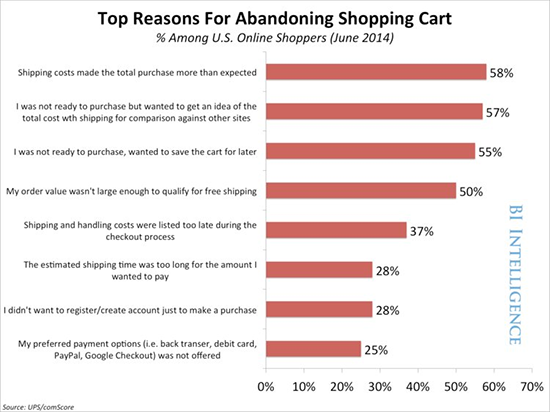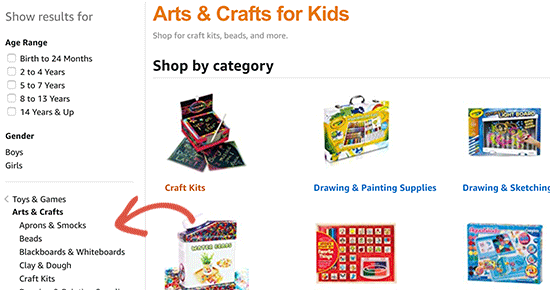You want to make extra money on the side, so you looked into several online business ideas and decided that creating an online store is the way to go.
The next step is where beginners often struggle the most: choosing which products to sell on your online store.
In this ultimate guide, we will explain how to easily choose the best products to sell online by following our step by step process.

1. Basics of Choosing Products to Sell on Your Ecommerce Store
Before you start looking into products that you can sell, there are some basics that you need to keep in mind. Let’s look at some of the most important ones first.
1. Choosing Your Ecommerce Platform
First you need to choose a platform that you want to use to sell your products.
Choosing the right eCommerce platform is important because it would affect your choice of products and how you do business.

WooCommerce is the most popular eCommerce platform in the world. It is easy to use, and you can use it to sell all kind of products while accepting payments using multiple payment gateways. See our guide on how to start an online store to get started with WooCommerce.
However, WooCommerce is not the only platform out there. There are some great WooCommerce alternatives that could be better for you depending on what you are trying to sell.
If you lack technical skills and want a quicker way to build an online store, then you may want to look into Shopify. It is a fully hosted solution that takes care of all the technical stuff. The catch here is that you will be paying a little more, and your costs will grow as you make more sales.
For a side by side comparison, see our article on Shopify vs WooCommerce with the pros and cons of both platforms.
2. Shipping
Shipping has a huge impact on the success of an eCommerce store. A study conducted by Business Insider discovered that higher shipping costs are the #1 cause of all abandoned shopping carts online.

You would obviously want to select products that you can ship at lower costs or for free. If you only plan to sell digital products (music, video, software, ebook, etc), then you don’t have to worry about shipping because the products will be downloaded by customers online.
3. Inventory
Do you want to manage inventory and keep products stocked? For that, you will need storage space and inventory management through your eCommerce software. Keeping products in stock will increase your cost of business.
On the other hand, drop-shipping solves this problem. You can select products that are shipped directly by the manufacturer or supplier.
4. Price
You’ll need to find products where you can offer a competitive price to your customers. If the product you are selling is more expensive than your competitors, then obviously that would discourage many first time buyers.
2. Types of Products That You Can Sell Easily
There are many different kinds of products that you can sell in your online store. Let’s narrow them down into two major sections.
1. Commoditized Products
These are products that everyone needs and are sold by many small and large stores without any difference in quality. For example, everyday products like soap, detergent, cereal, and more.
These products are made by some of the largest brands in the retail industry and are available widely with little to no difference in price.
This makes it harder for you to compete with giants like Amazon, Walmart, Target, etc. They can offer those products at lower costs, free shipping, and other perks.
This rules out a large number of products for you.
2. Niche Products
These are products that are unique or hand-made, available in limited stocks, and from specific suppliers. Think of home-made soaps, novelty t-shirts, ceramics, gift items, software, and countless other products.
Since these products are not widely available, they give you a competitive advantage.
There are even unique platforms like Etsy stores where you can find small vendors who make beautiful products and would love to partner up with other stores.

You can also find suppliers abroad using websites like AliExpress or Alibaba.com. These suppliers can make those niche products to your specifications and deliver them to you.
Niche products are available in almost any product category imaginable. You’ll find tons of unique ideas as you do your product research.
This brings us to our next tip.
3. Doing Product Research On Your Own
Don’t use your best guess to select products you sell online. Back it up with data so that you know there is a demand for these products and customers are looking for them.
The first tool you are going to use for your research is Amazon.
It is the world’s largest eCommerce store with thousands of products. Luckily, it is also a treasure trove of free data that you can scrap and make your decisions.
Go through different product categories to find out top performing products in each category. Keep narrowing down your search to sub-categories to find targeted sub-niches of products.
Let’s suppose you wanted to sell kid’s toys, narrow down your search to very specific toy categories. This excludes popular products, and you get a very focused set of products as you filter through.

Switch to the ‘Bestsellers’ view to find the top performing products on Amazon under each category.

SEMRush is another great tool that you can use to gather data from competitors or any eCommerce store you want.

It shows you where those eCommerce stores are getting most of their traffic, which products they are promoting through paid advertisements, what are their most viewed products, and more.
It also shows your competitor’s product listing ads from Google. You can see their best performing product listing ads, keywords, and other data.
Here are some other tools you can use to gather product data from other websites.
- Ahrefs – A powerful competitor research tool that will show what’s popular on the websites of your competitors.
- AdPlexity – A popular eCommerce research tool that helps you collect eCommerce data from across the web, from competitors, or any other website.
- AmazeOwl – It is an Amazon product reseach tool available as a free desktop application.
4. Use Customer Personas to Find Product Ideas

A customer persona is a fictional profile of an ideal customer that you want to target. You create this profile by answering simple questions about an ideal buyer.
This is your target audience and personifying them helps you understand them better when you are doing product research.
If you have an existing store, then you can use eCommerce tracking in Google Analytics to build an ideal buyer persona.
If you are just starting out, then use your best guess to build a customer persona. This exercise helps you understand your customer’s needs, questions they may have, and what kind of products they would like to buy.
To learn more about buyer persona, see this guide on creating a concrete buyer persona with ready-made templates and examples.
5. Find Products You are Passionate About
As career advisors say, ‘Choose a job you love, and you’ll never have to work a day in your life’.
Similarly, choosing products that you are passionate about helps you sell them more effectively.
These could be products that you personally love and passionately recommend to your family and friends. These could be products related to a hobby or activity that you are passionate about.
Nothing drives more passion when you build something useful and want others to use it.
Following your passion allows you to look deeply into products and find ideas that offer real value to your customers.
We hope this article helped you learn how to choose the best products to sell online. You may also want to see our article on tips to grow your business online without spending a lot of money.
If you liked this article, then please subscribe to our YouTube Channel for WordPress video tutorials. You can also find us on Twitter and Facebook.
The post How to Choose the Best Products to Sell Online (Beginner’s Guide) appeared first on WPBeginner.
Comments
Post a Comment